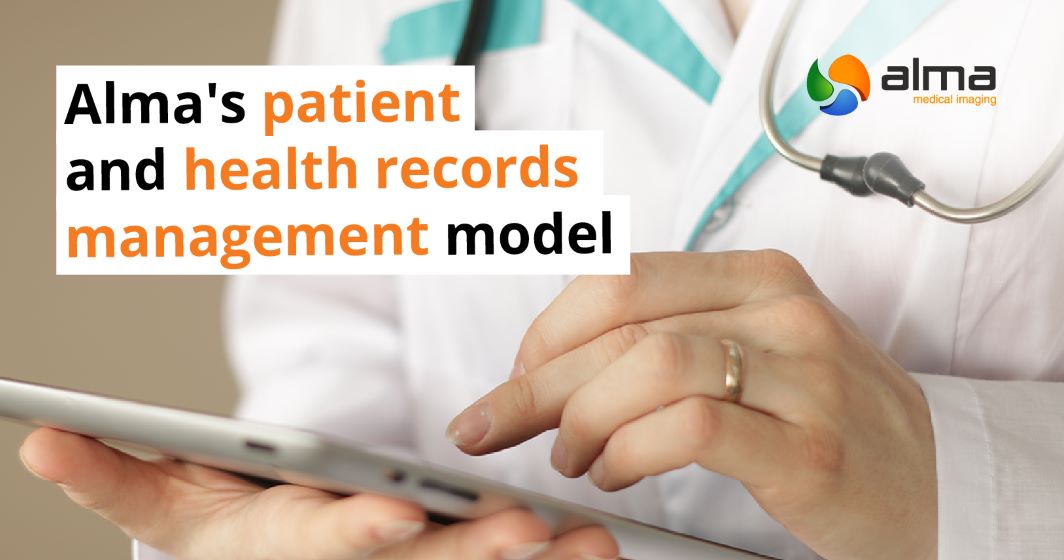Are you familiar with Alma’s patient and health records management model?
You may already know how our digital health platform works, with built-in advanced AI tools. But what exactly does it cover, and what are the concepts on which our solution is based to ensure efficient and secure patient management? We explain them below.
The needs of the healthcare system
To explain what Alma’s model consists of, the first thing we need to do is to talk about the current needs of the healthcare system. Although they already existed before the pandemic, some of these points have become even more important in the wake of the Covid-19 crisis.
Transparency in clinical situations
Transparency in clinical situations and the elimination of inter-observer difference is key to decision-making. For this purpose, and we will go into detail about this when we discuss our model and the MIMMS concept, model-based medical evidence that encompasses all patient information is very useful.
Access to the patient records
On the other hand, being able to access the patient’s history at all times is essential. How many times have we seen people come to the doctor’s office with folders and even bags full of reports?
Unstructured information complicates efficient patient management. The solution to this problem is therefore to structure data in a way that makes it accessible to all actors in the healthcare ecosystem.
Compatibility between tools
Radiological viewers, asynchronous and real-time telemedicine platforms and even everyday items capable of collecting patient information such as a smartphone: finding a solution that allows all these tools to be compatible with each other adds great value to clinical practice.
Intra and interprofessional communication in healthcare
Health communication – between medical professionals, with industry and with patients, among others – is key to good patient management and streamlining procedures.
Asynchronous telemedicine tools such as Alma HEALTH PLATFORM make it possible to reduce waiting times, the possibility of sending data to prosthesis manufacturers makes it possible to obtain better results adapted to the patient’s needs and the ease of communication offers to professionals the option of requesting second opinions on complex diagnoses.
These are just a few examples, but the truth is that good communication within the healthcare ecosystem benefits everyone involved.
Information security
Computing data offers a lot of advantages, but it also comes with great responsibility. The main one? Ensuring information security by using only reliable tools.
Our patient management model
Having analyzed the needs of the healthcare system, we will now explain what our patient management model consists of. The MIMMS (Medical Information and Model Management System) concept, by Professor Lemke et al. in 2014, is the basis of what we will explain below.
MIMMS Medical Information and Model Management System
MIMMS is the concept on which we built our idea of computerized medicine and our Alma HEALTH PLATFORM solution, with integrated AI tools.
But what does this system consist of? It is about integrating the different sources of data, from those that are part of the hospital to others as common as the smartphone. We should not forget that the phone collects daily data as the physical exercise that the patient does, something that directly influences the health.
And what do we achieve? Identifying useful data for decision-making, integrating the workflows of all healthcare professionals and moving from individual data to a Specific Patient Model on which to build clinical practice. It is, after all, about having a global vision of the person, from the age and weight to the complete medical history. In this way, the professionals can have access at all times to valuable data that allows them to:
- Ensure transparency in medical practice.
- Improve clinical outcomes.
- Offer their patients personalized care.
Patient empowerment
On the other hand, it is clear to us that data belong to the patient. That is why, through our digital health platform, we want to empower patients by offering them an active role in decision-making.

